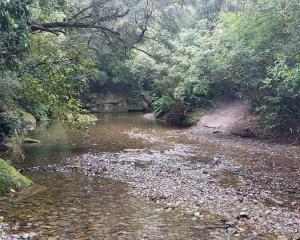

From town, a lakeside track heads to The Outlet. Soon after the beautiful new boardwalk you hit Stoney Cove, at the bottom of Winders St. It’s only 15 minutes from town but is secret and sheltered from the prevailing winds that tousle the township.
In five minutes there’s Eely Point, known for jetboating and swimming. But the walking version takes you around the headland for a view uplake of today’s adventure.

Signage says it takes two hours to walk to The Outlet but that would be depriving oneself of visually pigging out on the giant chocolate box photos. Every step there’s a slightly different take on the heavenliness. The track’s mostly flat, so is popular for cycling but going by foot almost compels slow walking, insisted upon by nature’s beauty.
Back in town, heading out west, the track has a different flavour, up and down over rocky shoreline past lakeside wilderness reminiscent of Wanaka of old. In the olden days numerous kainga mahinga kai (food gathering places) and kainga nohoanga (settlements) were dotted around the lake.

Until the early 1990s this section of the route was raw lakeside but now is a fully formed part of the Te Araroa Trail, so in theory ends at Bluff. It passes comforting pockets of native plants eco-sourced from elsewhere around the lakeshore.
A decent destination for a day walk is Damper Bay, its shallowness and sandy bottom making it one of the best swimming spots on the whole track. From the track above the bay you look down through clear water metres and metres to the bottom, so deep and alive it almost has a voice. It would be a bass.












